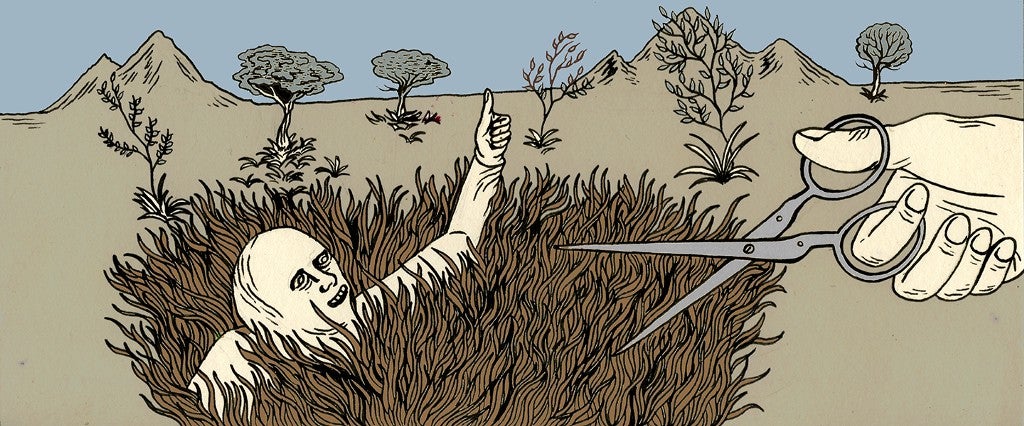People have been living in fear of pube-trimming for the past week after a new study from the journal Sexually Transmitted Infections found people who groom their pubic hair are up to 3.5 to 4 times more likely to have had an sexually transmitted infection (such as herpes, HPV, syphilis or HIV) at some point in their lives.
Contrary to what Time writes, however, you don’t need to rethink trimming your hedges. And no, NPR, “going bare down there” will not necessarily boost your risk of getting chlamydia.
There’s no conclusive proof that pube-trimming itself puts a person at higher risk of an STI. And people who suggest it does are making the classic mistake of confusing correlation for causation — a distinction covered in any 100-level psychology class.
In this case, man- and ladyscaping is merely correlated with higher rates of STIs. They’re not causally linked, as much of the coverage suggests.
There is a chance that, in tidying up shop down there, you make a wrong move and nick yourself with a razor and Oops! you’ve cut your dick. An abrasion or open wound on your genitals will greatly increase your chances of transmitting an STI, so don’t fuck if you’re dealing with such a scenario.
But that’s not what this study was about. The researchers didn’t round up a bunch of dudes with cut-up dongs and women with micro-tears on their labia and ask them how many times they’ve had chlamydia. They asked people if they groomed their pubes, then asked them if they’d ever had an STI, and they noticed a positive correlation between those responses—which does not mean the former caused the latter.
Moreover, the study participants appear to have underreported their STI histories. “As the authors indicate themselves early in the paper, about half of Americans will contract an STI. However, in their sample, only 14 percent of groomers and 8 percent of non-groomers reported ever having had an STI,” Debby Herbenick, professor of applied health science at Indiana University and fellow at the Kinsey Institute, writes in a blog post critiquing the study.
The study adjusted its statistical analysis to account for each respondent’s number of sex partners and the frequency with which they engaged in sexual activity. But it lacked reporting in other important areas, such as whether groomers use condoms, and whether they’re monogamous, polyamorous or just unrepentant cads.
“Past research (including that of my own research team) has found that total removal of pubic hair is more common among people who are not in monogamous relationships, for example, underscoring the complexities of how people may make decisions about pubic hair style based on their sexual lives,” Herbenick continues. “Similarly, sexual behavior patterns and sexual frequencies change throughout life and so correlating two ‘moving target’ variables over a lifetime is challenging at best.”
Here’s a plausible alternative theory: It’s not the act of pube grooming that puts people at greater risk; it’s all the casual boot-knocking they do with their kempt nether regions.
Let me explain:
- When people do sex, they show their pubic regions to another person.
- Some people do lots of casual sex with people they’re not in committed relationships with.
- Casual sex-havers are more inclined to trim their pubes, because they want their pubic regions to appear well-groomed when they are shown to another person for the first time. (People in relationships don’t trim their pubes, however, because they’ve stop trying to impress their partners and let their gardens grow wild and have just gradually let themselves go altogether, settling into romance-less complacency.)
- Having lots of casual sex puts you at greater risk for transmitting an STI.
- Therefore, pube-trimmers have a higher incidence rate of STIs, even though the pube trimming isn’t the cause.
In conclusion, pubic hair is not a condom.
